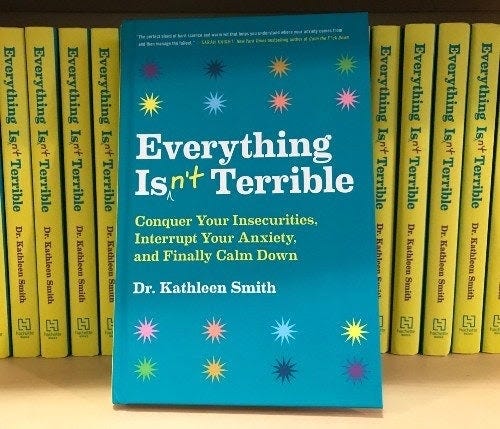Last week I turned on paid subscriptions for my newsletter. Starting in September, 50% of my weekly posts will be for paid subscribers, and the other half will be for everyone. Consider supporting my work if you’re interested! Sign up here. - K
Nobody is more annoying than a recent convert. When we discover something new, we want everyone to know about it.
And bless our hearts, we can’t really help it. The moment you introduce your brain to something good, it immediately considers whom to share it with, and how to convince them. Mentally, we’re already in the pitch meeting, telling someone why they should watch this TV show, take up veganism, or implement this strategy in the office.
This impulse isn’t bad—it’s how we spread information and why we have culture. But in anxious times, our urge to convert gets dialed way up. And our tolerance for differences evaporates.
This happened to me when I first started learning about Bowen theory. Before I’d even absorbed the ideas, I was lecturing my family, my grad school classmates, anyone who wasn’t thinking the way I was thinking about relationships. You can imagine how well this went over. By trying to convince others of its usefulness, I’d missed the central concept of the theory.
Have you ever had a conversation with someone who was very focused on changing you, or converting you to a way of thinking? They think they’re passing along a solution, when they’re mostly just passing along their anxiety.
When anxious people try to change or convince us, we usually respond by:
Agreeing with them just to calm them down.
Attacking and trying to prove them wrong.
Avoiding by changing the subject or leaving.
This is why so many of our attempts to manage others backfire. We forget that managing our own distress is often the best way to get people to hear you. Lower the intensity in the exchange, and you turn on the pre-frontal cortex.
But how do you tell the difference between convincing and connection? Between sharing your thinking and shoving it in someone’s face?
Convincing can look like:
Talking without asking questions.
Passing along your anxiety.
Saying “We”or “You” a lot (i.e. We/You need to do this!)
Ignoring or dismissing people’s thoughts.
Defining the challenge for them.
Connecting can look like:
Asking questions as much as you share thoughts.
Managing your anxiety.
Using “I” statements (i.e. “I have decided to do X.”)
Listening to people’s thoughts.
Asking people to define their challenges.
The urge to change, convince, or convert is a fantastic barometer for anxiety. Because the pull to change others ebbs and flows. It changes with the level of anxiety, and the level of sensitivity to others’ differences. On a calm day, it’s easier to let people be themselves. And you might notice it’s easier to let your friends be themselves than your family, because the pull towards togetherness is stronger in the family.
When I get set on fixing people, I also try to remind myself what it would be like to have a million Kathleens running around this city. God help us.
So this week, try considering all the ways you’re attempting to “convert” people to do as you do, or think as you think. What would it look like to simply define your thinking, and share your experiences, rather than convince?
Also consider what a group loses when we demand conformity. When we lose all our energy trying to make each other in our image?
When we let people be themselves, groups can be more resourceful. When we stop trying to convince, and just share our thinking, we allow people to make choices based on their thinking, not our anxiety. Yes, there has to be some agreement, some shared beliefs and rules, organizing a group or relationship. But when we focus on ourselves, while staying connected, we help lower the intensity that clouds our creativity and flexibility.
When we invest our energy into managing, defining, and directing ourselves, not in changing others, interesting things can happen. Let me know what you discover.
News from Kathleen
I finally turned on paid subscriptions. Now that I’m finished with my next book, and my daughter’s school is back in session (praise be), I’ll be writing weekly posts for my Substack. Starting in September, the first and third weeks of the month will be free for all subscribers. All other weeks will be for paid subscribers.
Click the button below to sign up.
Other ways to support my work:
Leave a review of my book on Amazon. Reviews help people find the book.
Forward or share this newsletter to others who might be interested.
Want to read more of my writing? Get my book, Everything Isn't Terrible, from Amazon (Kindle version is $2.99 this week), Barnes and Noble, Indiebound, or your local bookstore (best option).
Want a free anxiety journal with the book? Calming Down & Growing Up: A 30 Day Anxiety Journal includes thirty daily prompts to help you reflect on and respond to your anxious behaviors. To receive a copy, just email me your receipt of Everything Isn’t Terrible.
Email me if you’re interested in Bowen theory coaching or want me to speak to your group or workplace. Follow me on Twitter, Facebook, or Instagram.
Want to learn more about Bowen theory? Visit the Bowen Center’s website to learn more about their conferences and training programs.
.






Now ı realize why some of my speechs are not listened or paid attention because ı try to convert them to what ı think. I will try to connect with them. I'll see how it is gonna be like. I can't wait to write my experiences about this.
Thanks
I love this! Really clear way to explain something that can be so nuanced and complicated. Connection is so important!